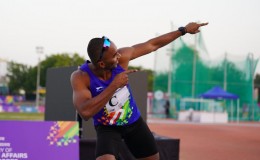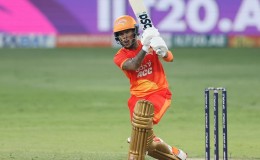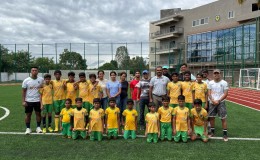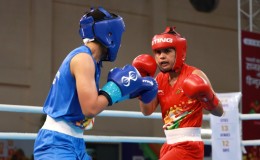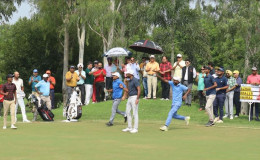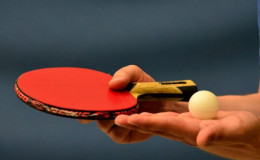Page 6 of 7
DOPING
Article 1 of ADC
Earlier Definition: Use of any Prohibited Substance and Method prohibited by IOC/IOC Medical Commission
New Definition: Doping is defined as occurrence of one or more of the Anti Doping RULE VIOLATIONS Set forth in Article 2.1 – 2.8 of the ANTI DOPING CODE
Article 2
- 2.1 The presence of a Prohibited Substance or its Metabolites or Markers (compound/group of compound/biological parameters) in an Athlete’s bodily Specimen
- 2.1.1 Athlete’s personal duty to ensure that no Prohibited Substance enters his or her body.
- Athletes are responsible for any Prohibited Substance or its Metabolites or Markers found to be present in their bodily specimens.
- Not Necessary: Intent, Fault, Negligence or Knowing Use.
EXEMPTION TO ARTICLE 2.1
- Excepting those substances for which a quantitative reporting threshold is specifically identified in the Prohibited List
- The Prohibited List may establish special criteria for the evaluation of Prohibited Substances that can also be produced endogenously.
ARTICLE 2.2
- Use or Attempted Use of a Prohibited Substance or a Prohibited Method
- 2.2.1 The success or failure of the Use of a Prohibited Substance or Prohibited Method is Not Material. It is sufficient that the Prohibited Substance or Prohibited Method was Used or Attempted to be Used for an Anti Doping rule Violation to be committed.
ARTICLE 2.3
- REFUSING or FAILING without compelling justification to submit to Sample Collection after Notification as authorized in applicable Anti Doping Rules or otherwise EVADING Sample collection
ARTICLE 2.4
- VIOLATION of applicable requirements regarding Athlete availability for Out-of-Competition Testing including FAILURE to provide required WHEREABOUTS information and MISSED TESTS which are declared based on reasonable rules.
ARTICLE 2.5
- TAMPERING or ATTEMPTING to tamper with any part of Doping Control
- Altering Identification Numbers on a Doping Control Form during Testing
- Breaking the B Bottle at the time of B Sample Analysis
ARTICLE 2.6
- POSESSION of Prohibited Substance and Methods
- Possession by an Athlete at any time or place of a substance that is prohibited in Out-of-Competition Testing or Prohibited Method.
- Possession of a substance that is prohibited in Out-of-Competition Testing or a Prohibited Method by Athlete's Support Personnel in connection with an Athlete Competition or Training.
EXEMPTION TO ARTICLE 2.6
- The Athlete establishes that the Possession is pursuant to a therapeutic use exemption granted in accordance with the rules and regulations of the Code or other acceptable justification.
- The Athlete’s Supporting Personnel establishes that the Possession is pursuant to a therapeutic use exemption granted to an Athlete in accordance with the rules and regulations of the Code or other acceptable justification.
ARTICLE 2.7
TRAFFICKING in any Prohibited Substance or Prohibited Method
- Sell
- Give
- Administer
- Transport
- Send
- Deliver
- Distribute a prohibited substance or Prohibited Method to an Athlete either directly or through one or more third parties.
EXEMPTION TO ARTICLE 2.7
- Excluding the sale or distribution (by medical personnel or by Persons other than Athlete’s Support Personnel) of a Prohibited Substance for genuine and legal therapeutic purposes.
ARTICLE 2.8
- ADMINISTRATION or ATTEMPTED administration of a Prohibited Substance or Prohibited Method to any Athlete or ASSISTING, ENCOURAGING, AIDING, ABETTING, COVERING UP or any other type of complicity involving an Anti Doping Rule Violation or any ATTEMPTED VIOLATION
ARTICLE 3
PROOF OF DOPING
- 3.1 Anti Doping Organization shall have the burden of establishing that an Anti Doping Violation has occurred
ATHLETES/SUPPORTING PERSONEL RIGHTS
Athlete or other person alleged to have committed an Anti Doping Rule Violation the burden to
- Rebut a presumption or establish specified facts or circumstances
- 3.2.1 Rebut that the Sample Analysis and Custodial Procedures were not in accordance with the International Standards
- 3.2.2 Exemption: Even if there is any departure from International Standard but it did not cause an Adverse Analytical Finding or other Anti Doping Rule Violation shall not invalidate such results
ARTICLE 8
RIGHT TO A FAIR HEARING
- Each ADO shall provide a hearing process for any Person who is asserted to have committed an Anti Doping Rule Violation by addressing the consequences.
- Timely Hearing
- Fair & Impartial Hearing Body
- Right to be represented by Counsel at the Person’s own expense.
- Right to be fairly and timely informed of the asserted Anti Doping Rule Violation
RIGHT TO A FAIR HEARING
- Right to respond to the asserted Anti Doping Rule Violation and resulting consequences
- Right of each party to present evidence, including the right to call and question the witness
- Person’s right to an interpreter at the hearing
- Timely written reasoned decision
ARTICLE 9
AUTOMATIC DISQUALIFICATION OF INDIVIDUAL RESULTS
- An anti doping rule violation in connection with an In-Competition test automatically leads to Disqualification of the individual result obtained in that Competition with all resulting consequences including forfeiture of any medal, points and prizes
ARTICLE 10
SANCTIONS
- Disqualification of Results in Event During which an Anti Doping Rule Violation occurs
- If the Athlete establishes that he or she bears No fault or Negligence for the violation, the Athlete’s individual results in other Competitions shall not be Disqualified unless the Athlete’s results in Competitions other than the Competitions in which the Anti Doping Rule Violation occurred were likely to have been affected by the Athlete’s Anti Doping Rule Violation
- Prohibited Substances & Methods
- Use or Attempted Use of Prohibited Substances & Methods
- Possession of Prohibited Substances & Methods
First Violation – 2 Years Ineligibility
Second Violation – Lifetime Ineligibility
- On establishing, specified Substances which are particularly susceptible to unintentional anti doping rules violations because of their general availability in medicinal products, that the use of such specified substances was not intended to enhance sport performance
- First violation – Warning
- Second Violation – 2 Years Ineligibility
- Third Violation – Lifetime ineligibility
- Prohibited Substances & Methods
- Use or Attempted Use of Prohibited Substances & Methods
- Possession of Prohibited Substances & Methods
First Violation – 2 Years Ineligibility
Second Violation – Lifetime Ineligibility
- Refusing or Failing to Submit to Sample Collection
- Tampering with Doping Control
First Violation – 2 Years Ineligibility
Second Violation – Lifetime Ineligibility - Trafficking
- Administration of Prohibited Substance or Method
4 Years – Lifetime Ineligibility
If the Athlete is Minor – Supporting Personnel – Lifetime Ineligibility
Whereabouts Violation or Missed Test
- Minimum – Three Months
- Maximum – 2 Years
Article 13
- RIGHT TO APPEALS


